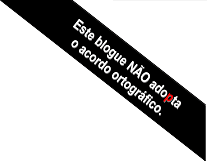Argentine Teammates Aimar, Saviola Help Club's Bid to Regain Traditional Place
By GABRIELE MARCOTTI
SL Benfica centerback Luisão is not who immediately comes to mind when you think of Brazilian soccer. Fittingly, for a man whose name literally means "Big Luís", his 6-foot-4 frame is long and muscular and, while his main responsibility is taking opposing center-forwards out of the game, he has a knack for popping up with important goals.
He did just that on Saturday, giving Benfica, at the top of the Portuguese League, the 1-0 win over second-place Sporting Braga which, in all likelihood will seal the club's record 32nd domestic championship. Benfica now boasts a six-point lead with six games to go and it's hard to see it throwing away the title.
You can only imagine what the party will be like when the crown does return to the club's Estadio do Luz for the first time since 2005. Benfica is far and away the country's best-supported club, and has more than 200,000 fans worldwide who pay around $34 a year for the privilege of calling themselves "socios" or club members. According to club officials, no team in the world has more paid-up members. And, for a relatively small nation like Portugal, its fan diaspora stretches all over the world. "Casa do Benfica" ("House of Benfica") fan clubs can be found in places as diverse as Johannesburg, South Africa; San Jose, California; Luanda, Angola; and Sydney, Australia.
And yet, Benfica has become something of a by-word for underachievement. In the past 15 years, the club has won just one league title, watching helpless as Porto—its rival from the north of the country—established itself as a force, not just in Portugal, but in Europe as well (witness the UEFA Cup and Champions League cups won under Jose Mourinho).
Last summer, Benfica rolled the dice and spent heavily to redress the imbalance. Some $45 million was spent, with just $7 million recouped in sales. In came, among others, Ramires—at 23 years old already a regular in midfield for Brazil—and Javi Garcia, a promising defensive midfielder from Real Madrid. One of the more interesting signings however was Argentine striker Javier Saviola, who rejoined playmaker Pablo Aimar a decade after the pair set South American soccer alight.
Back in the fall of 1999, Mr. Aimar and Mr. Saviola, 19 and 17 respectively at the time, formed a devastating partnership for Argentina's River Plate, whom they led to the Apertura and Clausura championships. Their precocious success led to call-ups to the national team and big-money moves to top European sides. Mr. Aimar joined Valencia in January 2001 for a club-record $32 million and, six months later, Mr. Saviola transferred to Barcelona for $20 million.
Both hit the ground running. Mr. Aimar led Valencia to two Spanish titles and a UEFA Cup, while Mr. Saviola scored sixty goals in his first three seasons at Barcelona. But then something unusual happened. Their performances dropped off severely. Mr. Aimar remained at Valencia until 2006, though by the end he was a shadow of former self. This was followed by two lackluster seasons at Zaragoza, the second blighted by relegation. Mr. Saviola was loaned out to Monaco and Seville, both times failing to make his mark. After another year as a bit player at Barcelona, arch-rival Real Madrid picked him up as a free agent, but, again he was a marginal figure, making just six league starts in two seasons.
But in the summer of 2008, Benfica took a gamble on Mr. Aimar and, after an injury-slowed first half of the campaign, he excelled towards the end of 2008-09 season. So much so that the club decided to repeat the exercise with Mr. Saviola, whom Real Madrid was looking to off-load.
The pair have enjoyed a renaissance—Mr. Saviola has scored 17 goals and Mr. Aimar is back to his creative best—and, at 28 and 30 respectively, both have a number of good seasons left in them. Together with countryman Angel Di Maria—arguably Benfica's player of the season and, at 22, a likely target for Europe's top clubs this summer—the Argentine trio have been the driving force behind Benfica's resurgence.
With the league all but wrapped up, Benfica can now focus on European competition. On Thursday it takes on Liverpool in the quarterfinals of the Europa League. Benfica's legion of fans are once again dreaming, harking back to the early 1960s and the days of Eusebio and Mario Coluna, when the club twice won the European Cup.








































Bom texto. É sempre bom ler artigos destes na impressa estrangeira. Apesar de um ou outro lapso (34$ por ano?!!!)
ResponderEliminar*imprensa
ResponderEliminarRealmente somos enormes:
ResponderEliminarhttp://www.maisfutebol.iol.pt/portal-iol/benfica-the-wall-street-journal/1151048-5280.html